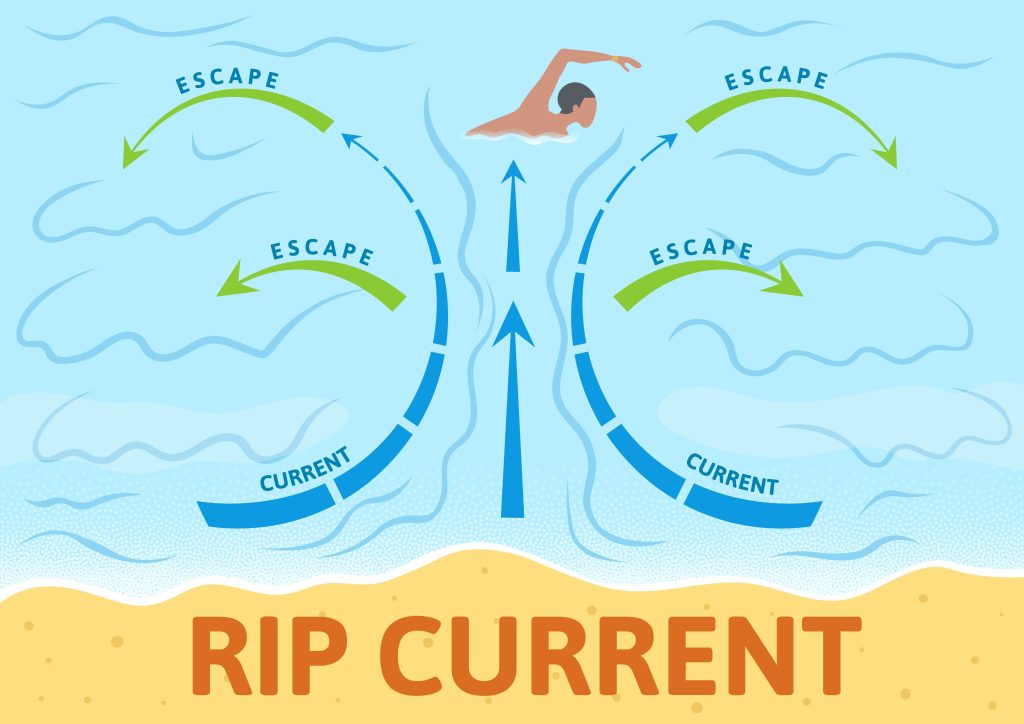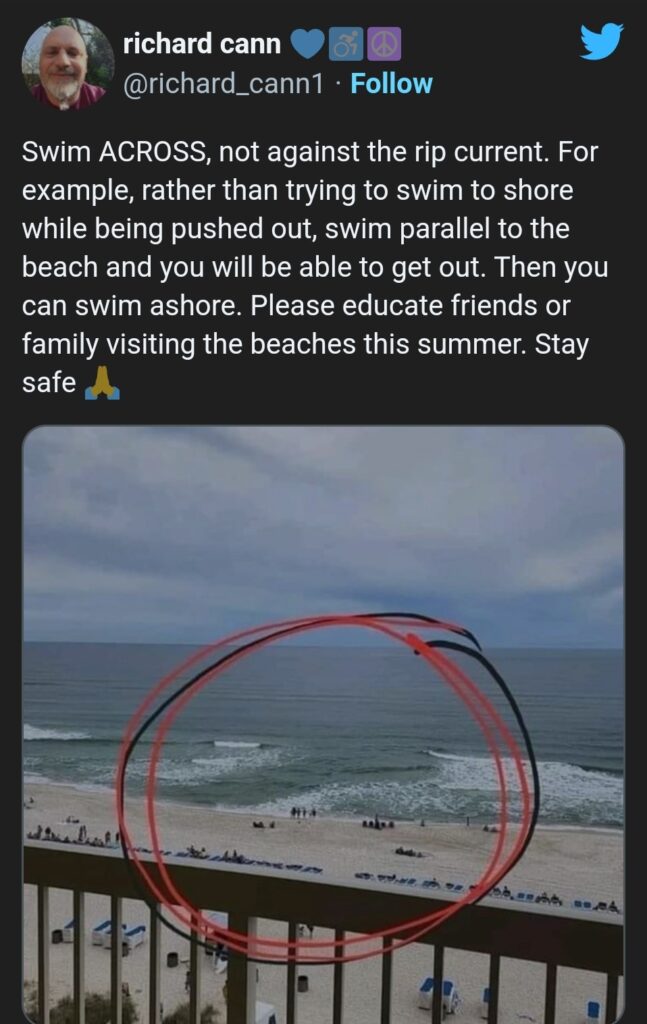Rip currents are powerful and dangerous channels of water that flow away from the shore. They can be difficult to spot but are commonly found on beaches with a steep drop-off. Waves push water towards the shore, creating a buildup that rushes back out to sea in concentrated channels, forming rip currents. To spot a rip current, look for calm areas along the shore where the water is not breaking as it should be.

If you find yourself caught in a rip current, it’s important to stay calm. Don’t try to swim against the current, as it will exhaust you. Instead, swim parallel to the shore, following the current until you are out of its pull. Once out of the current, you can swim back to shore. Floating on your back and paddling with your hands can help conserve energy. It’s crucial to understand that rip currents are not the same as rip tides or undertows, which have different causes and characteristics.

To stay safe in the water, always be aware of your surroundings and never swim alone. Avoid beaches with large waves if you are not a strong swimmer and consider wearing a life jacket. Pay attention to signage and flags indicating the presence of rip currents or rip tides. If in doubt, it’s best to avoid going in the water. With knowledge and preparation, you can enjoy a day at the beach without worries.


